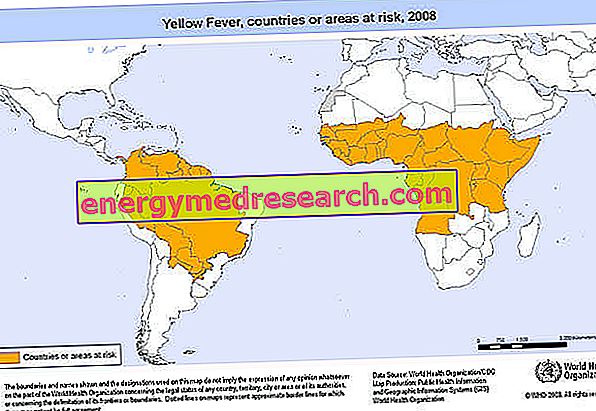ZMapp is a drug, still experimental , developed to try to cure Ebola . It is a serum made up of three monoclonal antibodies that specifically bind to proteins present on the surface of the virus. In practice, the patient is provided with a pre-packaged immune response: ZMapp prevents the virus from overcoming the cell membranes , then blocks it before it can multiply
Category infectious diseases
Generality Diphtheria is a severe and extremely contagious infectious disease caused by the Corynebacterium diphtheriae bacillus. Typically responsible for the formation of a gray-black mass in the patient's throat, diphtheria causes respiratory problems, fever, swollen lymph nodes in the throat, weakness, cough, painful swallowing, sore throat, hoarseness, rhinorrhea, etc
Definition Disinfectants are a group of substances belonging to the group of anti-infective agents and used for the disinfection of environments, surfaces and objects of various kinds. Disinfectants are widely used in the medical field and in surgery, to disinfect environments and instruments, but at the same time they are widely used also in the home
Generality Ectoparasites are parasites that live on the outer surface of the host , or in easily accessible cavities, such as the nose, ears and mouth. The ectoparasites of medical interest are mostly arthropods (Phylum Arthropoda), the most famous of which are undoubtedly fleas, ticks, lice and mites
Introduction For a long time, enterococci were labeled as streptococcal microorganisms belonging - due to their peculiar antigenic characteristics - to Lancefield's D group. However, starting in the late 1980s, the researchers decided to review the aforementioned division and to insert the enterococci in a group of their own
EBV virus Epstein-Barr Virus (EBV or HHV-4 or Herpes human virus 4) is a DNA virus belonging to the Herpesvirus family, the same as varicella, S. Antonio fire and labial / genital herpes. Infections carried by Epstein-Barr Virus are extremely common: just think that 90-95% of the world population has come into contact with EBV at least once in their life
Definition of endometritis Endometritis is an infectious-inflammatory process of the endometrium, the mucosa that covers the uterus internally. When the infection goes even to the level of the myometrium, one speaks correctly of endomyometritis. Step back to understand ... The endometrium is the mucous membrane that covers the uterine cavity internally The perimeter is the serous tunic of the uterine cavity, a peritoneal leaflet that constitutes the outermost part of the uterine wall The myometrium is instead the muscular layer of the uterine wall, between the perimeter and the endometrium
Scroll down the page to read the yellow fever summary table Yellow fever: description Acute infectious disease, caused by the bite of infected mosquitoes. The name "yellow fever" was coined for the first time around the middle of the eighteenth century by Hughes Yellow fever: synonyms Black vomit Antilles fever Typhoid itch Yellow fever: geographical spread No cases of yellow fever have been observed in Asia, Europe and Australia Yellow fever is endemic in some areas of equatorial and southern America Typical disease of the tropical forests of central Africa Yellow fever: incidence 20
What is intermittent fever There is talk of intermittent fever when the basal temperature undergoes wide fluctuations, alternating periods of apyrxia (absence of fever) with others of pyrexia / hyperpyrexia (fever, even very high). In intermittent fever, the interval between the phases of hyperthermia and apyressia has a variable duration (hours / days) based on the disease that caused it
Definition of yellow fever Yellow fever is an acute infectious disease caused by the bite of infected mosquitoes: it is commonly known as black vomit, Antilles fever or, again, as typhoid . Yellow fever is a serious health problem that particularly affects the tropical forests of central Africa and the southern Saharan area
Premise In microbiology, the genus " Fusarium " includes a rather numerous group of hyphal fungi, omnipresent molds in the soil capable of causing damage to roots, tubers and rhizomes. Due to its ability to generate rot and other plant diseases, Fusarium molds are classified as phytopathogenic fungi











